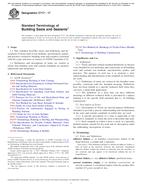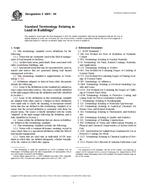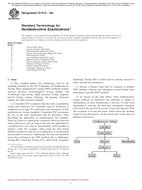1.1 This guide covers the category of water analysis diagrams that use two-dimensional trilinear graphs as a technique for displaying the common chemical components from two or more complete analyses of natural ground water (see Section ) on a single diagram. This category includes not only trilinear-shaped diagrams but also the diamond- or parallelogram-, rectangular-, or square-shaped graphs that have trilinear subdivisions.
1.2 This guide is the first of several documents to inform professionals in the field of hydrology with the traditional graphical methods available to display ground water chemistry. Note 1Subsequent guides are planned that will describe the other categories of diagrams that have been developed to display ground water chemical analyses. (1)A guide for diagrams based on data analytical calculations will include those categories of water analysis graphs in which one analysis is plotted on each diagram (for example, the pattern, bar, radial, and circle diagrams). (2)A guide for statistical diagrams will include those categories of water analysis graphs in which multiple analyses are analyzed statistically and the results plotted on the diagram (for example, the box, etc.).
1.3 Numerous methods have been developed to display the ions dissolved in water on trilinear diagrams. These diagrams are valuable as a means of interpreting the physical and chemical mechanisms controlling the composition of water.
1.4 The most commonly used trilinear methods were developed by Hill
1.5 This guide offers an organized collection of information or a series of options and does not recommend a specific course of action. This document cannot replace education or experience and should be used in conjunction with professional judgment. Not all aspects of this guide may be applicable in all circumstances. This ASTM standard is not intended to represent or replace the standard of care by which the adequacy of a given professional service must be judged, nor should this document be applied without consideration of a project’s many unique aspects. The word “Standard” in the title of this document means only that the document has been approved through the ASTM consensus process.
Product Details
- Published:
- 07/01/2006
- Number of Pages:
- 22
- File Size:
- 1 file , 520 KB


